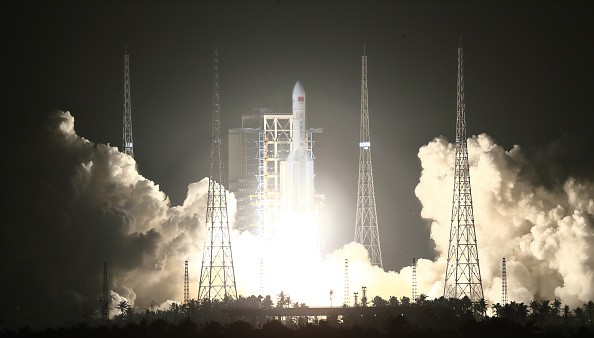China has set off its heavy-lift Long March 5 rocket on Thursday, Nov. 3, from the Wenchang launch center on Hainan Island at around 8:43 p.m. Beijing Time.
An article by space.com said that the Long March 5, one of the first new large rockets to use green fuel, carried into orbit the experimental satellite called Shijian-17, which will conduct tests on electric-propulsion technology.
China's Long March 5 is 57 meters (187 feet) tall and consists of two stages. It can lift a load of 27.6 tons (25 metric tons) to low-Earth orbit (LEO) and 15.4 tons (14 metric tons) to the more distant geostationary orbit, the China Aerospace Science and Technology Corp said.
According to the report, the Long March 5 is nearly as powerful as the United Launch Alliance's Delta IV Heavy launcher, the strongest rocket today. The alliance, however, said that some larger rockets will be produced soon, such as the SpaceX's Falcon Heavy that can send 60 tons to LEO. It is scheduled to fly for the first time next year.
As part of the country's ambitious space program, the Long March 5 will also launch big modules that will be used to build its 60-ton space station which it expects to become operational by 2022.
The large rocket will also be used to send Chang'e-5, an unmanned explorer which is scheduled to be launched for its return mission to the moon next year, according to Chinese space officials.
The new rocket is part of China's Long March rocket series, including two other large rockets which debuted recently. The Long March 6 lifted off for the first time in Sept. 2015 while the Long March 7 flew in June 2016.
In the past, most Long March rockets used toxic fuel such as dinitrogen tetroxide, but the three new rockets now use a more environment-friendly fuel which is a combination of kerosene and liquid oxygen.



























